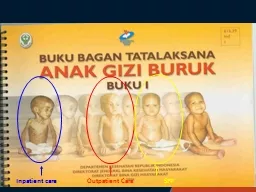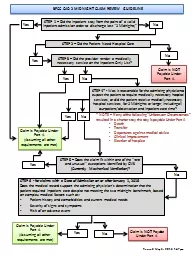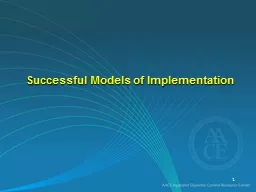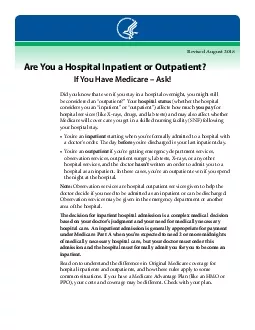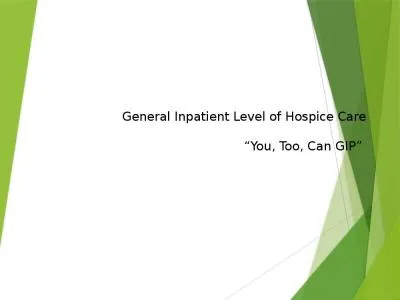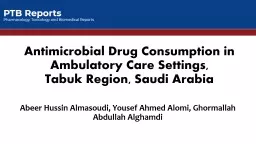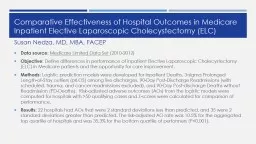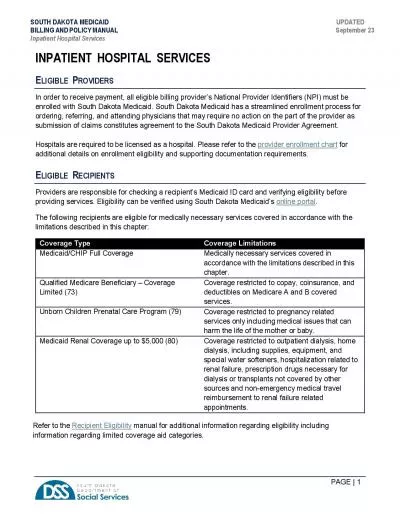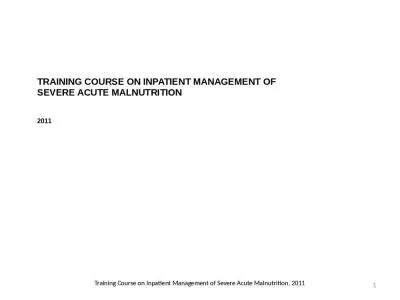PPT-1 Inpatient care
Author : min-jolicoeur | Published Date : 2016-07-26
Outpatient Care SFP Using Plumpy Doz to prevent malnutrition SouthSudan 2011 From Relief to SelfReliance Nutrition and Food Security Department Alexandra RutishauserPerera
Presentation Embed Code
Download Presentation
Download Presentation The PPT/PDF document "1 Inpatient care" is the property of its rightful owner. Permission is granted to download and print the materials on this website for personal, non-commercial use only, and to display it on your personal computer provided you do not modify the materials and that you retain all copyright notices contained in the materials. By downloading content from our website, you accept the terms of this agreement.
1 Inpatient care: Transcript
Outpatient Care SFP Using Plumpy Doz to prevent malnutrition SouthSudan 2011 From Relief to SelfReliance Nutrition and Food Security Department Alexandra RutishauserPerera and Stien Gijsel. Marian Conde. University of Central Florida. Leadership and Management. Scope: History. Demand for Emergency Department services exceeds the available supply. Inability . to move patients to inpatient units. STEP 2. – Did the Patient Need Hospital Care . STEP 3 . – Did the provider render a medically necessary service on the Inpatient Only List? . No. . Yes. . Claim is . NOT . Payable Under Part A . Successful Models of Implementation 1 STAFF TRAINING GLUCO- METRICS Hospital Prioritization PATIENT CARE PROTOCOLS The 4 Spheres of a Quality Inpatient Glucose Management Program 2 1 The 4 Spheres of a Quality Inpatient Glucose Management Program Admission status orders Karen Clark, MD FACP Medical Director Care Management and Utilization Review Professor of Internal Medicine WVUH CMS Requires that hospitals review the appropriateness of all admissions as a condition of participation If You Have Medicare 150 AskRevised August 2018Did you know that even if you stay in a hospital overnight you might still be considered an 147outpatient148 Your hospital status whether the hospital yo “You, Too, Can GIP” . “We need to trust that our patients are the experts on their lives, culture, and experiences, and if we ask with respect and genuine desire to learn from them, they will tell us how to care for them.” . Lauren Dufresne, ACM-RN,BSN . Observation . vs. Inpatient. . What does that mean?. What are the indications of each status?. How will this affect a patient financially?. How will this affect discharge planning?. Tabuk. ) Region Hospitals, Saudi Arabia. Abeer. . Hussin. . Almasoudi. , Yousef Ahmed . Alomi. , . Ghormallah. Abdullah . Alghamdi. , . Rasha. . Saad. . Alshahrani. Background. :. . This article aims to explore antimicrobial medication consumption and related cost among different age groups in inpatient units at North West Region Hospitals, Ministry of Health, and Saudi Arabia. . Data source. : . Medicare Limited Data Set . (2010-2012). Objective. : Define differences in performance of inpatient Elective Laparoscopic Cholecystectomy (ELC) in Medicare patients and the opportunity for care improvement.. Sarah Hartley MD. Associate Program Director. Hospitalist. Inpatient Training Program. . Inpatient Training Environment. Unique Aspects of our Inpatient Structure and Schedules. Focus on Education . Cameron Swift, King’s College School of Medicine, London. Falls Prevention Summit July 2022 . Reducing Inpatient Falls . & Harm from Inpatient Falls. KEYS TO AN EFFECTIVE FALLS SERVICE. (1) CONCEPT: FALLS IN LATER LIFE: . BILLING AND POLICY MANUAL Inpatient Hospital Services U PDATED December 21 PAGE | 1 INPATIENT HOSPITAL SERVICES E LIGIBLE P ROVIDERS In order to receive payment, a ll eligible billing provider ’ References: Center for Health Information and Analytic, Methodology Paper, Relative Price, . http://www.chiamass.gov/assets/docs/r/pubs/16/RP-Methodology-Paper-9-15-16.pdf. . Centers for Medicare and Medicaid Services, Office of Enterprise Data and Analytics, Medicare Fee-For-Service Provider Utilization & Payment Data Physician and Other Supplier Public Use File: A Methodological Overview, January 19, 2017: . TRAINING COURSE ON INPATIENT MANAGEMENT OF . SEVERE ACUTE MALNUTRITION. 2011. TRAINING COURSE ON INPATIENT MANAGEMENT OF SEVERE ACUTE MALNUTRITION. Teaches procedures in the national Community-Based Management of Severe Acute Malnutrition (CMAM) Guidelines.
Download Document
Here is the link to download the presentation.
"1 Inpatient care"The content belongs to its owner. You may download and print it for personal use, without modification, and keep all copyright notices. By downloading, you agree to these terms.
Related Documents

